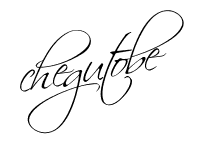- Jana contoh-contoh fakta, konsep, prosedur, klasifikasi, generalisasi dan teori yang terdapat dalam topik kumpulan masing-masing.
- Bina satu peta konsep atau peta minda untuk melihat hubungan antara elemen-elemen analisis mereka itu.
- Kemudian mereka berbincang tentang kesesuaian dan contoh-contoh itu untuk digunakan dalam pengajaran.
Topic: Nuclear Energy
Subtopic 6.2: Production of Nuclear Energy and Its Uses (Fission)
Fact
-Nuclear fission is one of the processes of nuclear energy
-The breakup of large nuclei into two nearly equal fragments is called nuclear fission.
.
Concept
Nuclear fission is a nuclear reaction that splits the nucleus of an atom into smaller, subatomic particles. It often produces free neutrons and photons. Fission of heavy elements can release large amounts of energy as electromagnetic and kinetic energy. For fission to produce energy, the total binding energy of the resulting element has to be lower than that of the original element. Fission is a form of transmutation because the resulting fragments are not the same element used.
Process and generalize
When a neutron collides with and is absorbed by a target nucleus, the target nucleus begins to vibrate and become distorted.
The vibration continues until the distortion becomes so severe that the attractive strong nuclear force can no longer balance the electrostatic repulsion between the nuclear protons and split into two that is called ‘fission product’ different with the target nucleus and also will produce two or more neutrons.
The large amount of energy released is due to sum of the masses of the fission products being less than the original mass of the heavy atom.
The minimum amount of fissionable material needed to ensure that a chain reaction occurs is called the ‘critical mass’. Anything less than this amount is called ‘subcritical’.
Analogy
Everyone's played with marbles at one time or another, right? Well, imagine about 200 marbles lying on a flat surface, all jumbled together, and roughly forming a circle. What would happen if someone took another marble and threw it at them? They would fly all around in different directions and groups, right? That is exactly what happens in nuclear fission. The filled circle is like an atom's nucleus. The marble being thrown is like a "neutron bullet". The only differences are that the marbles are protons and neutrons and the protons and neutrons aren't in a filled circle, but in the actual atom are in the shape of a sphere. Of course, an atom is also a bit more complicated than a pack of marbles.
Theory
In 1902, Frederick Soddy proposed the theory that "radioactivity is the result of a natural change of an isotope of one element into an isotope of a different element." Nuclear reactions involve changes in particles in an atom's nucleus and thus cause a change in the atom itself.
![clip_image002[8] clip_image002[8]](https://blogger.googleusercontent.com/img/b/R29vZ2xl/AVvXsEidFzf-34dXLICwPf89X6iTBvhwjE0yqvjF32c2O54uYYWLpZ7nED9onPRNB1eKeIlZhfCJwl3CI1giZoPWyHiulV-TxxISjZafrXMHGcRfLez9yc7imBiCGZwmC0ZXpFLfG2bgvG21OIyt/?imgmax=800)


No comments:
Post a Comment